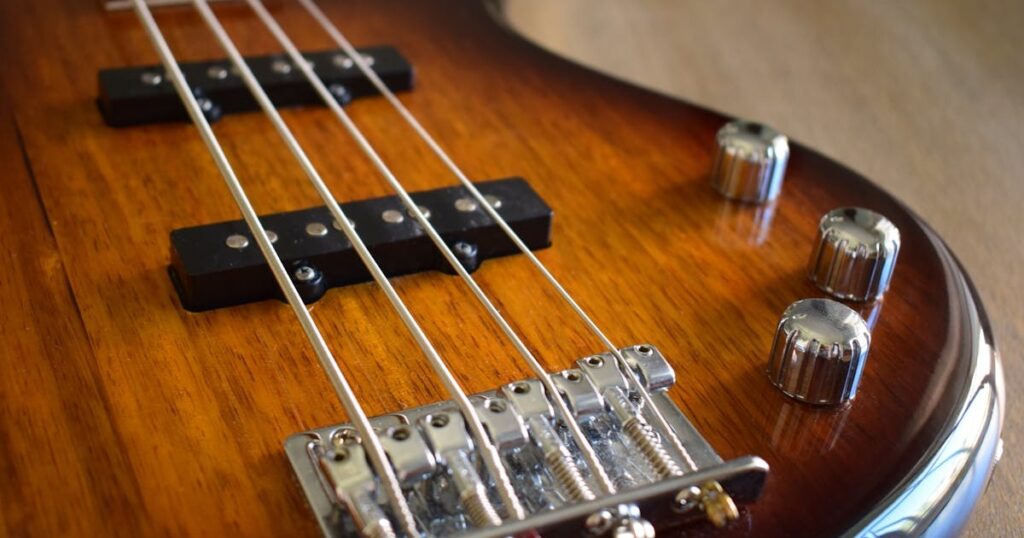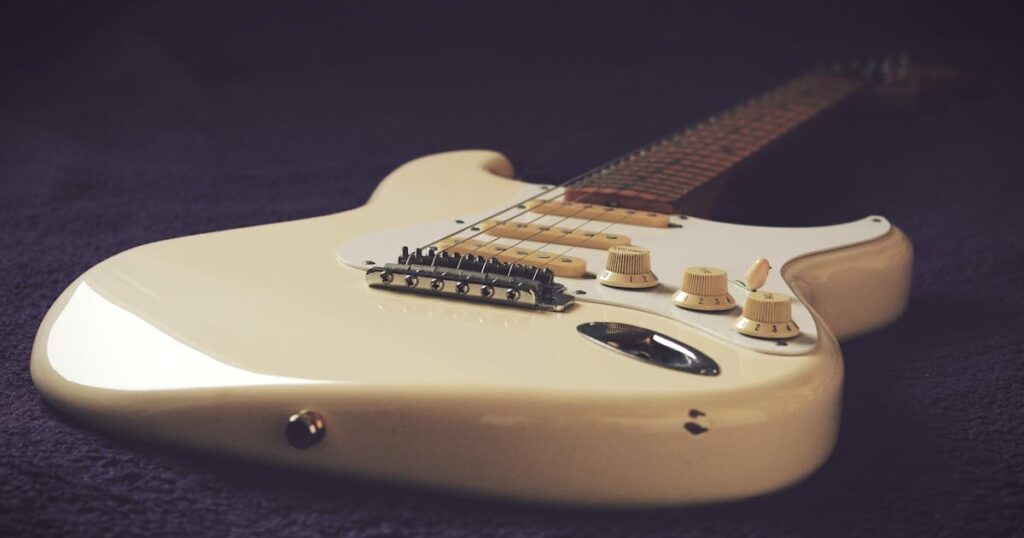Key takeaway: Acoustic pickups for electric guitars enhance sound quality, minimize feedback, and provide versatile options for different playing styles. Understanding their features helps musicians choose the right pickup, ensuring optimal performance in live settings and studio recordings alike.
As a musician, finding the right tools to enhance your sound is essential. For guitar players, an acoustic pickup can make all the difference in amplifying their instrument’s natural tone and projecting it to larger audiences.

In this guide, we will explore the world of acoustic pickups for electric guitars. We will discuss their benefits, different designs, and how they can be used in various settings. By the end of this article, you’ll have a better understanding of what makes a great acoustic pickup and how it can elevate your music.
The Standard Tool for Amplifying Acoustic Guitars
When it comes to amplifying acoustic guitars, there is one standard tool that has been used for decades – the piezo pickup. This type of pickup consists of a small strip or disc that attaches to the inside of an acoustic guitar’s bridge beneath the saddle.
Piezo pickups work by converting mechanical vibrations from the strings into electrical signals. These signals are then sent to an amplifier or other sound equipment, allowing you to project your guitar’s sound at a louder volume.
One of the major benefits of using a piezo pickup is its resistance to feedback. Feedback occurs when sound waves from your amplified instrument are picked up by its own microphone or pickup and are re-amplified, creating a screeching noise.
With piezo pickups, this problem is significantly reduced, making them ideal for live performances. They also tend to have a high output level, meaning they can produce a strong signal without the need for an external preamp.
The Pickup That’s MOST Resistant to Feedback
While piezo pickups are known for their resistance to feedback, there is one type of pickup that takes it to the next level – the soundhole magnetic pickup. This type of pickup sits inside the guitar’s soundhole and uses magnets to pick up vibrations from the strings.
Unlike piezo pickups that are attached to the bridge, soundhole magnetic pickups are not in direct contact with the strings, reducing the chances of feedback occurring. They also have a warm and natural sound, making them a popular choice among guitar players.
However, one downside of soundhole magnetic pickups is that they can be prone to picking up unwanted noises from the environment. This can result in a less clean and clear sound compared to other types of pickups.
A Piezo Pickup Design With Way More Flexibility
Another type of piezo pickup design that has gained popularity in recent years is the under saddle pickup. As the name suggests, this type of pickup sits under the saddle and picks up vibrations directly from the strings.
One major advantage of using an under saddle pickup is its flexibility in capturing different tones. By adjusting the placement of the pickup under the saddle, you can achieve a range of sounds, from a brighter tone closer to the bridge to a warmer tone near the neck.

Undersaddle pickups also tend to have a higher sound quality compared to other types of piezo pickups. They produce a more natural and balanced sound, making them suitable for both live performances and studio recordings.
The Acoustic Guitar Pickup With the Highest Sound Quality
If sound quality is your top priority, then you may want to consider using an internal microphone pickup. This type of pickup is placed inside the body of the guitar and picks up vibrations from its entire surface.
Internal microphones are known for producing the most natural and authentic sound since they capture all frequencies and nuances of an acoustic guitar. They are also versatile, allowing you to adjust their position within the guitar’s body for different tonal qualities.
However, one major downside of internal microphones is their susceptibility to feedback. They are extremely sensitive and can easily pick up unwanted noises from the environment or even your own movements on stage. This makes them more suitable for recording in a controlled studio setting rather than live performances.
An Acoustic Guitar Pickup That Offers the Best of Both Worlds?
While each type of acoustic guitar pickup has its pros and cons, one option that offers the best of both worlds is a combination pickup system. These systems use multiple types of pickups – such as an undersaddle pickup and an internal microphone – and blend their signals together for a more versatile and natural sound.
With combination pickup systems, you can achieve clarity and resistance to the feedback of undersaddle pickups while also capturing the warmth and authenticity of internal microphones. However, these systems tend to be more expensive and may require additional equipment or technical knowledge to set up.
Can Acoustic Guitar Pickups Work Well in the Studio?
Yes, acoustic guitar pickups can work well in the studio as long as they are chosen and set up correctly. The type of pickup used will depend on the sound you want to achieve, but overall, piezo pickups – specifically those with high output levels like under saddle or soundhole magnetic pickups – tend to perform better in recording situations.

When using acoustic guitar pickups in the studio, it’s important to also consider other factors, such as microphone placement and room acoustics. Experimenting with different combinations of equipment can help you find the perfect sound for your recordings.
Frequently Asked Questions (FAQ)
What is the difference between piezo pickups and magnetic pickups?
Piezo pickups detect vibrations directly from the strings and are attached to the guitar’s bridge or saddle, making them highly responsive and resistant to feedback. In contrast, magnetic pickups, like soundhole designs, pick up string vibrations through magnetic fields and do not contact the strings, leading to a warmer sound but potentially greater sensitivity to environmental noise.
Can I use an acoustic guitar pickup with an electric amplifier?
Yes, acoustic guitar pickups can be used with electric amplifiers; however, it is essential to ensure that the amplifier is suited for acoustic sounds to maintain the natural tone of the acoustic guitar.
How do I prevent feedback when using acoustic guitar pickups on stage?
To reduce feedback, you can use piezo pickups, which are designed to minimize this issue. Strategically positioning your amplifier away from the guitar’s soundhole, using sound-dampening equipment, and controlling the volume levels can also help mitigate feedback.
Is it possible to combine different types of pickups?
Yes, many musicians use combination pickup systems that blend different types of pickups, such as piezo and internal microphones, to achieve a fuller sound. This allows players to enjoy the benefits of each type while minimizing their respective downsides.
How do I choose the right pickup for my acoustic guitar?
Selecting the right pickup depends on your intended use and sound preference. Consider factors such as the instrument’s tonal qualities, whether you’ll be playing live or in a studio, and your budget. Testing various pickups will help you understand which one best suits your playing style.
Conclusion: acoustic pickup for electric guitar
Acoustic pickups are essential tools for any guitar player looking to amplify their sound and perform live or record in a studio. Each type of pickup offers its own unique benefits, so it’s important to understand their differences and choose one that best suits your needs and playing style.
Whether you opt for a traditional piezo pickup or a combination system, having an acoustic pickup on your electric guitar can greatly enhance your music and allow you to reach larger audiences with your natural sound.
